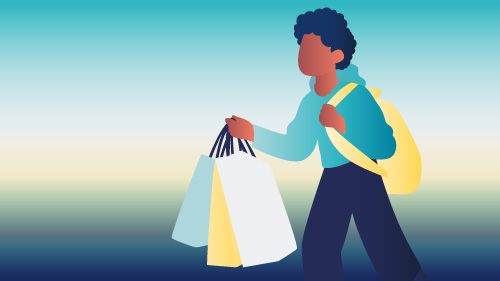
A Need or a Want?
Objectives
Differentiate a need from a desire
Description
After the teacher has defined the concept of need versus want, students are presented with various buying situations and must determine whether they express the fulfilment of a need or a desire.
Equipment
- A Need or a Want? document in PDF (in enough copies); or
- A Need or a Want? document in PowerPoint format (for use with an IWB);
- Answer Key and Avenues for Further Reflection document to be used with the entire class.
Introduction
5 minutes
Ask students to name household items (games, clothing, sports equipment, etc.) that they (or their parents) bought or received as a gift and which they do not use. Ask them whether they think buying these items met a need or a want.
Explanations
10 minutes
Basic needs are those that absolutely must be met in order for you to survive. For example, you absolutely have to meet your need to drink, eat, be clothed and sheltered, stay warm and safe, create bonds with others, and so on. That means you have no choice but to buy food and clothing, pay electricity bills and rent, etc.
Needs are also universal in nature: everyone has the same needs. They stem from a lack or will cause one if not satisfied. For example, a lack of food leads to hunger; if we are unable to meet this need, we will run out of energy and be unable to concentrate at school.
A want arises from a desire rather than from necessity. Satisfying a want is not essential, but it does make life more pleasant. Wants include the desire to eat candy, buy a video game, have a new pair of stylish shoes, go to the movies or a restaurant, etc. Unlike a need, a want does not stem from a lack and does not create one if unfulfilled. The decision on whether or not to fulfil a want is a matter of taste and the personal priorities that dictate our buying decisions. Satisfying a want makes us feel good, but only for a short time.
In addition, desires shift depending on culture and fashion, which is not the case with needs. For example, a child living in Québec today has about the same basic needs as a child living in Russia 20 years ago. However, you can be certain that their wants are very different.
We often confuse wants and needs. Needing food, water, warm clothing or contact with people is not the same as wanting a high-performance bike, the new chocolate bar advertised on TV, or spending the afternoon at an amusement park. When we buy products and services we don't need, we are overconsuming.
| Optional When we draw up a budget, we have to make sure that we prioritize spending that will meet our basic needs, such as groceries or prescription drugs. After, if there is money left over, we can spend it on other things that will make our life more pleasant, but that are not essential, like a ticket for a rock concert or a designer sweater. What's more, a basic need can be met in a non-essential way, so choices must be made based on our means. For example, do I need to buy a $500 top-of-the-line bike to get to school when it's only three blocks from my place? Could my brother's used bike be good enough? When I shop for groceries, do I absolutely have to buy brand-name products? Could the store brand be good enough? |
Instructions
1. Break up the class into teams and give each team the A Need or a Want? PDF document. Students work on the activity in small groups and discuss their answers for each situation (15 minutes). The teacher then brings students back together as a class (15 minutes).
or
Present the PowerPoint version of A Need or a Want? on the IWB. For each situation, ask students whether it expresses a need or desire. Lead the activity as a discussion.
2. The answers to certain situations should be nuanced. These situations require students to think critically and spur discussions. The Teacher's Guide provides avenues for further reflection on this topic.
Conclusion
10 minutes
Ask students to name the questions they can ask themselves (or their parents) before an upcoming purchase. The purpose is to determine whether the purchase meets a need or a want and, in so doing, become a more responsible consumer.
What are the students taking away from the activity?












